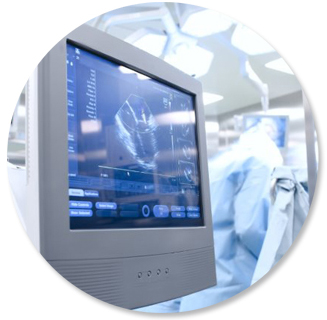
Gynaecological Procedures
I have extensive training and experience in gynaecological surgery. This includes a fellowship in minimally invasive surgery in the United Kingdom and I have published a number of papers on the subject.
Major procedures take place at the Mater Hospital, North Sydney. The Mater has nine operating theatres including robotic and endoscopic surgery facilities. Minor procedures also take place at the Genea Day Surgery Unit in the CBD and in my rooms (for example Mirena insertion and colposcopy).
Common procedures
- Laparoscopy Usually a day-stay or overnight procedure. It requires a general anaesthetic.
It involves passing a small optical instrument through or just below the naval to visualise pelvic structures. Additional instruments are often inserted in the region of the “bikini line” to allow a more thorough view or to facilitate a specific treatment such as removal of ovarian cysts or endometriosis. - Hysteroscopy Unless performed with a laparoscopy, hysteroscopy is a day-stay with return to work the following day.
Hysteroscopy involves passing a small telescope through the cervix (via the vagina) to view the uterine cavity. It is used to: identify and treat causes of irregular/ heavy bleeding; investigate reproductive problems; take endometrial samples for analysis; remove endometrial polyps; place or remove of Mirena and other IUD’s. More sophisticated hysteroscopic procedures include: endometrial ablation for heavy bleeding; and removal of fibroids that intrude into the uterine cavity.
- Colposcopy is the initial investigation for an abnormal Pap smear. It involves an optical instrument and can be done in either consulting rooms. It is helpful to let Sarah know if you think you need a colposcopy. It is just like having a Pap smear collection even if a tiny sample of tissue is taken (biopsy) for pathology. The usual outcomes are either a conservative “follow-up” strategy or, sometimes, local loop treatment is recommended to remove pre-cancerous tissues. In either case, the long-term outcomes are usually excellent. If a procedure is needed, I am mindful of the need to minimise loss of cervical tissue given its importance in reproduction.

Common conditions that are sometimes managed surgically include
- Endometriosis
- Ovarian cysts
- Fibroids
- Chronically heavy or painful periods (there are often non-hysterectomy options)
- Tubal disease
- Occasionally complete removal of a pelvic structure (for example uterus or ovaries) is needed, but more often there are conservative options. Minimally invasive surgery can be used for most cases.
- Vaginal Surgery can be used to manage prolapse, incontinence and as a route for hysterectomy in appropriate situations.
Fees
My fees usually follow the schedule recommended by the Australian Medical Association. My practice manager, Sarah, is happy to discuss fees and scheduling. The maximum “gap” for my surgical fee can be determined in advance.